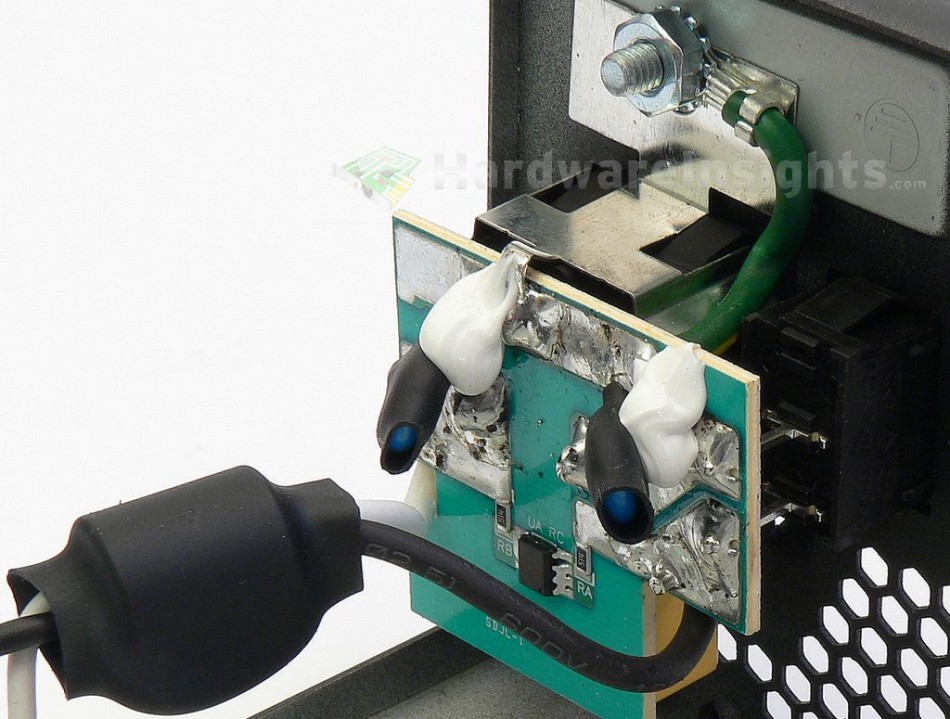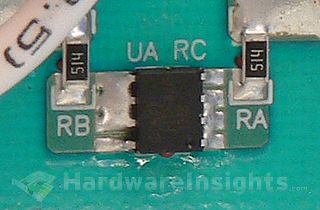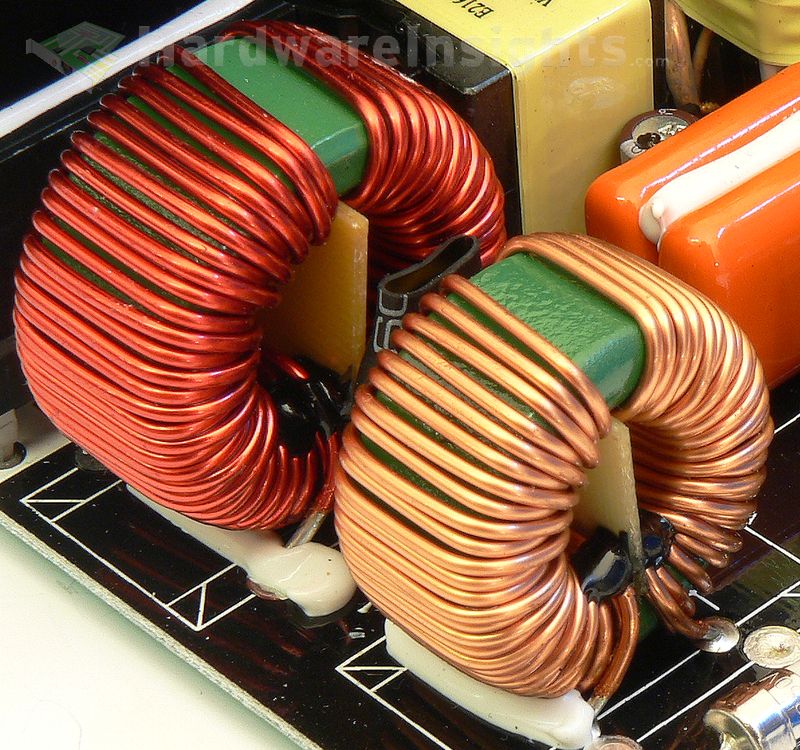Contents
- 1Introduction
- 1.1Packaging and accessories
- 2Connectors & cabling
- 2.1Casing & cooling
- 3Input filtering
- 4Primary side
- 4.1+5 V stand-by rail
- 5Secondary side
- 5.1Build quality
- 6Load testing
- 6.1Loading +5 V SB
- 6.2Combined loading
- 6.3Combined loading ripple
- 6.4Crossloading, overloading and the Sweater contest
- 6.5Crossloading, overloading ripple
- 7Conclusion and evaluation
- 7.1Thanks
Input filtering
The first part of the input filtering inside the Enermax Digifanless starts, as usual, directly on the AC inlet with two ceramic Y capacitors in a heatshrink sleeve and one film X capacitor. Both are soldered into a small board directly on it. The soldering is quite messy, there are multiple solder balls visible even in the image. The inlet is partially shielded. The wires from the power switch to the main board go through a ferrite core for extra filtration.
The inlet itself carries a small daughterboard with Champion Micro CMD02X IC used to discharge the film X caps only after power is lost, not continuously while wasting power. It is a very clever way of saving space and it is also good the board is here as it can also discharge capacitors on the main board if the fuse is intact (and if not, the charge stays there and cannot harm anybody touching the inlet pins).
The second part of the filtration is on the main board itself, consisting of two common-mode chokes and a metal-oxide varistor (MOV) right between them, with some heatshrink. There is also a single Y capacitor between rectified ground and earth ground, that is all. Somewhat less components than we are used to, I am curious about the high-frequency interference on secondary side. The thermistor with bypass relay is located near input capacitor.
X capacitors (between phase and neutral) and Y (between phase and ground/neutral and ground, often also between one side of the high-voltage DC and ground) are used to filter out high-frequency ripple from power grid (often from devices which lack filtration because of cost cutting, but also from devices where filtration is very difficult to implement) and also keeps ripple from this unit from entering the grid. Chokes are used for the same reason, together they form an input filter. These components may also (partially) help to filter smaller voltage spikes from the power grid while the MOV is used to suppress more serious spikes (for example from lightning hitting the power grid at a distance). These days, more Y capacitors are used even between rectified ground (ground after an input rectifier) and earth ground to suppress internal interference and keep it from getting to secondary side, because really high-frequency ripple goes everywhere it can to some extent (including coupling through the insulation, metal casing etc.). That is also why the AC conductors themselves are often inserted through the ferrite core.




